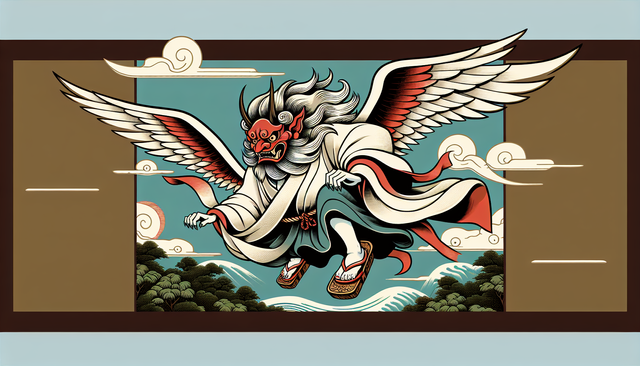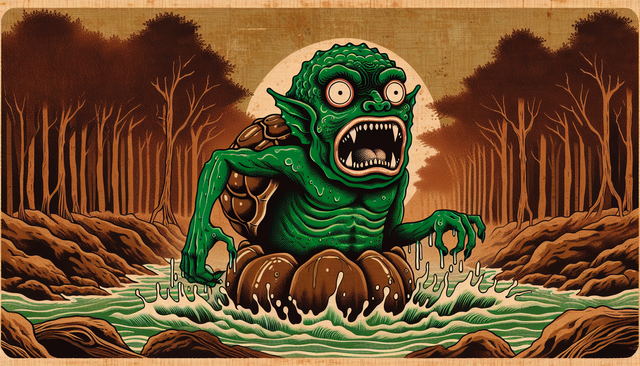
Thank you for watching. I'm the author, Yokai Rion.
Today, I will talk about the Kappa, a major Yokai in Japan.
Yokai are often found in Japanese legends and myths, serving as figurative creatures or spiritual entities that help explain humans, natural phenomena, or object events.
They have been used to interpret unexplained occurrences such as illusions, unknown sounds, and sudden changes in fate, serving as a means to integrate human experience.
Each Yokai possesses unique characteristics and powers, many of which are tied to various aspects of human life.
These beings have influenced Japanese art, literature, film, and games from ancient times to the present day.
Within these, the Kappa is a very famous Yokai in Japan.
Enrobed in a green body, bearing a shell like a turtle, and crowned with a dish on its head for storing water, it is said to primarily inhabit watersides.
I will now discuss the characteristics of such a Kappa in detail.
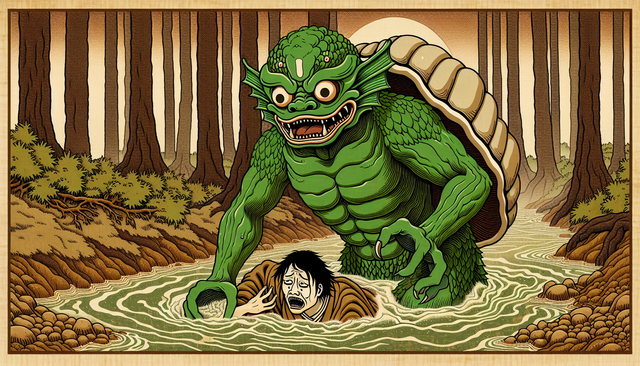
The Kappa is known for its distinctive physical features.
It's typically depicted as being the size of a child, with a body covered in scales that range from blue to green in color.
The most unique feature of a Kappa, however, is the small, water-filled dish on top of its head.
This dish, or "sara", is said to be the source of the Kappa's power.
As long as the dish is full of water, the Kappa is incredibly strong.
But if the dish ever dries out, the Kappa becomes immobilized.
The Kappa has webbed hands and feet, adapted for their aquatic habitats, and their bodies are also commonly depicted with a shell on the back, resembling a turtle.
These attributes all contribute to their amphibious nature.
In addition, the Kappa is also portrayed as a terrifying Yokai that drags people into the depths and tries to claim their lives.
The Kappa uses its powerful swimming ability and strength far greater than humans to drag people into the water.
The Kappa waits for humans to approach the edge of rivers or lakes and then attacks.
With its sharp claws and webbed hands, it seizes its prey and pulls them deep underwater.
The Kappa's physique, similar to that of a monkey or turtle, conceals unexpected strength which easily drags people underwater.
The act of a Kappa dragging people into the water is linked to its attributes originating from mythology and legend.
Kappa are originally aquatic spirits who claim water-bound areas as their territory, and they reportedly defend it from intruders.
When humans approach their territory, it is said that the Kappa drags them underwater as a part of their defense.
Moreover, there's a legend that Kappa are fond of human organs, particularly the liver, referred to as "shiruko".
As a result, it is said that Kappa pull humans into the water to obtain this "shiruko".
Additionally, Kappa are known to enjoy power struggles, particularly sumo wrestling.
Thus, stories are often told of Kappa dragging humans underwater to wrestle with them.
These behaviors demonstrate that the Kappa are depicted as entities linking the human world and the natural world.
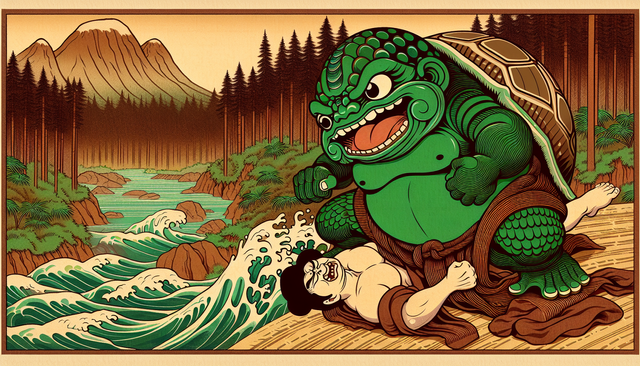
There are several perspectives on why Kappa engage in sumo wrestling.
Firstly, Kappa are deemed boastful and fond of contests in mythology and folklore, which serves as one reason for their engagement in sumo wrestling.
Sumo is notably a traditional Japanese form of strength contest, and it can be interpreted that Kappa choose sumo as a means to showcase their strength.
Additionally, sumo often takes place as part of sacred rituals, with it historically being performed as an offering to gods in ancient Japan.
Kappa wrestling in sumo could thus represent the linking of the human world with the world of the gods, or symbolize the harmony between humans and the natural world.
Furthermore, sumo wrestling is said to allow for communication between humans and Kappa. In fact, numerous legends and stories surround Kappa challenge humans to sumo matches, or conversely, humans challenging Kappa to such matches.
When viewed from each perspective, the reasons Kappa engage in sumo wrestling can be consolidated into three elements: the expression of strength and dignity through sumo, participation in sacred rituals, and interaction with humans.
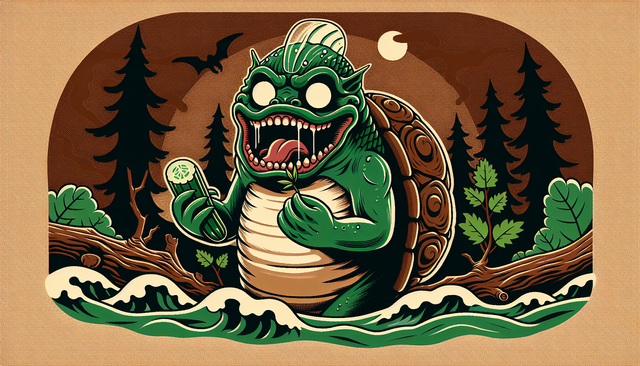
Until now, I've detailed why Kappa are feared by humans. From here on, I will provide strategies for dealing with encounters with Kappa.
Stay Away from Bodies of Water: Kappa are believed to dwell near bodies of water such as rivers and lakes. It's a good idea to avoid these areas if you believe Kappa might be present.
Polite Behavior: Kappa are known to appreciate politeness. So, if you encounter a Kappa, a deep and respectful bow might get it to bow in return, causing the water in its head dish (sara) to spill and thus weakening the Kappa.
Cucumbers: It's said that Kappa love cucumbers, more than they do human children or the livers they're supposedly fond of. Offering a cucumber might help to pacify a Kappa.
Knowledge of Sumo: As Kappa are known to enjoy sumo wrestling, understanding the rules and moves of this sport might give you an advantage should you have to wrestle one. Winning against a Kappa can bring you its respect and possibly develop a friendly relationship.
Seek Professional Help: If all else fails, seeking assistance from a religious professional or a spiritual medium is advisable. They might have the knowledge or ability to drive away or appease the Kappa.
Be Vigilant: Always stay on your guard when you're near a body of water that a Kappa might inhabit.
Remember these tips, and your interactions with a Kappa should, hopefully, be less frightening.

Additionally, Kappa are known to have a side to them that helps humans.
In contrast to their more menacing attributes, Kappa are believed to possess a powerful sense of honor and societal duty. Alongside their love of mischief and obsession with various forms of respect, Kappa are also known to assist people, especially those who manage to outwit them or form a bond of trust.
For instance, Kappa are reputed to possess knowledge of medicine and are particularly skilled in setting broken bones and curing diseases. There are also tales of Kappa helping farmers irrigate their land, significantly contributing to local agriculture.
Moreover, if a person is skilled enough to trick a Kappa into promising to aid them or keep away from causing trouble, it is said that the Kappa will keep its word due to its aforementioned strong sense of honor.
So, while there's plenty of reasons to be wary of a Kappa, we should not overlook their beneficial attributes and potential for good. It's a complex creature, the Kappa, embodying both menace and assistance, fear and respect.
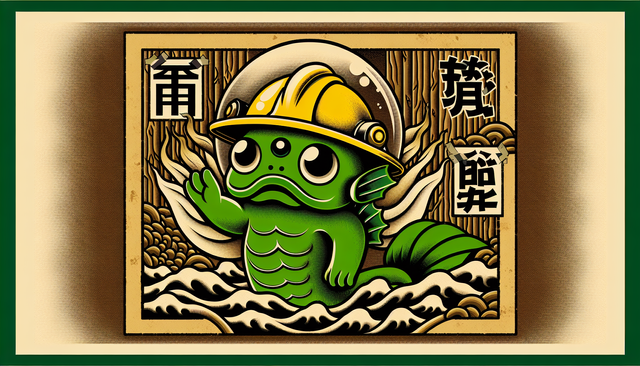
While the Kappa themselves may not directly instruct humans about environmental conservation, the folklore surrounding these creatures certainly alludes to the importance of coexistence with nature and its protection.
Kappa are considered creatures of the water, dwelling in rivers and lakes. The way they are intertwined with these natural surroundings points towards a symbiotic relationship with the environment and underlying implicit respect for nature. Moreover, the Kappa's assistance in irrigating fields showcases the sustainable use of resources.
Various moral lessons from Kappa-related narratives could be interpreted as urging for environmental respect and preservation. For instance, the Kappa’s fondness for cucumbers highlights the harmony in utilizing nature's products respectfully.
In a broader context, the reverence that the Kappa demand from humans could be seen as a metaphor for the reverence and respect that human beings should show towards the environment.
So, while Kappa supposedly don't sit humans down for an environmental conservation lecture, the mythology and stories illustrating their relationship with nature do stress on the significance of environmental consideration indirectly.
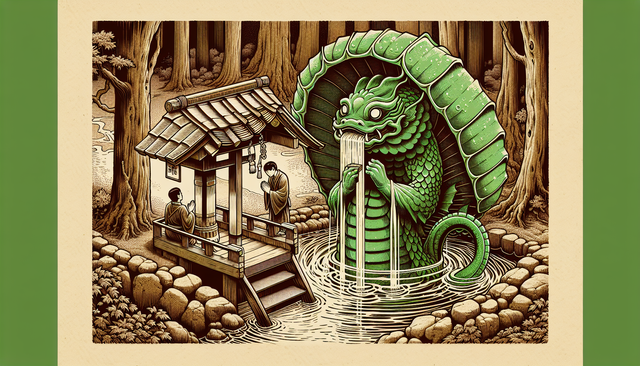
Indeed, Japanese mythical creature Kappa, while feared, are also revered as sacred entities in some regions.
As creatures that inhabit the water, they serve as cautionary figures to prevent waterfront accidents by discouraging children from venturing too close to the water.
Also, they are often portrayed as potentially friendly entities, provided one can understand and befriend them.
This duality in perception—between reverence and fear—creates a balanced approach towards the Kappa.
This complex image serves not merely as a source of fascination and lore, but also as a beneficial educative tool imparting valuable lessons and teachings about safety, respect, understanding, and co-existence.
It's a unique display of how societal norms, values, and safety measures can be encoded and passed down generations effectively through mythology and folklore.
Even the fearsome Kappa, a creature often regarded with apprehension, possesses its own admirable qualities.
Thank you for reading until the end.
Next time, I'd like to write about the Japanese yokai, Tengu.
To those who have become interested in Japanese yokai, I appreciate and love you all.
Here is the illustration of the yokai I'll introduce next time, Tengu.
